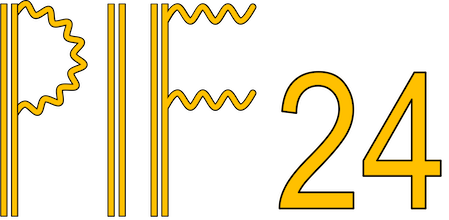Speaker
Description
Lasers at moderate intensities propagating through a plasma waveguide have demonstrated the potential for generating high-frequency radiation [1] as well as high-charge (>100 nC) electron beams [2] via direct laser acceleration (DLA). Such electron beams in a strong field background can emit multi-MeV photons, which have many potential applications in laboratory astrophysics, photonuclear spectroscopy, radiation therapy and radiosurgery, among others [3]. We are particularly interested in generating high-charge electron beams, and high-number photon beams with multi-GeV energy cutoff to seed electron-positron QED cascades and generate positron beams at high-power laser facilities. The path for optimizing the electron energy cutoff at any given laser facility is presented in our recent work, where we have computed the expected DLA electron energies for laser powers of 1 PW and higher [4]. We have already demonstrated with full-scale, quasi-3D particle-in-cell simulations that, using intense lasers, positrons can be created, injected and accelerated by DLA over hundreds of microns in a plasma channel [5]. We prove that positrons are guided along the channel central axis thanks to a high-charge self-loaded electron beam driven by the high laser intensity. This opens a path toward a new kind of compact and relativistic positron source, based on future-generation laser systems. DLA is therefore expected to play a central role for future QED plasma experiments, as it can couple with QED processes in a way that facilitates the energy transfer from the laser to the newly created particles, which can then be used for controlled seeding of further QED events, towards the ultimate goal of this quest: creating enough pairs to form an electron-positron plasma in the lab.
[1] S. Kneip et al, Phys. Rev. Lett. 100, 105006 (2008)
[2] A. E. Hussein et al., New J. Phys. 23, 023031 (2021)
[3] D. J. Stark et al.., Phys. Rev. Lett. 116, 185003 (2016)
[4] R. Babjak et al.Phys. Rev. Lett., 132, 125001 (2024)
[5] B. Martinez et al, Phys. Rev. Accel. Beams 26, 011301 (2023)

